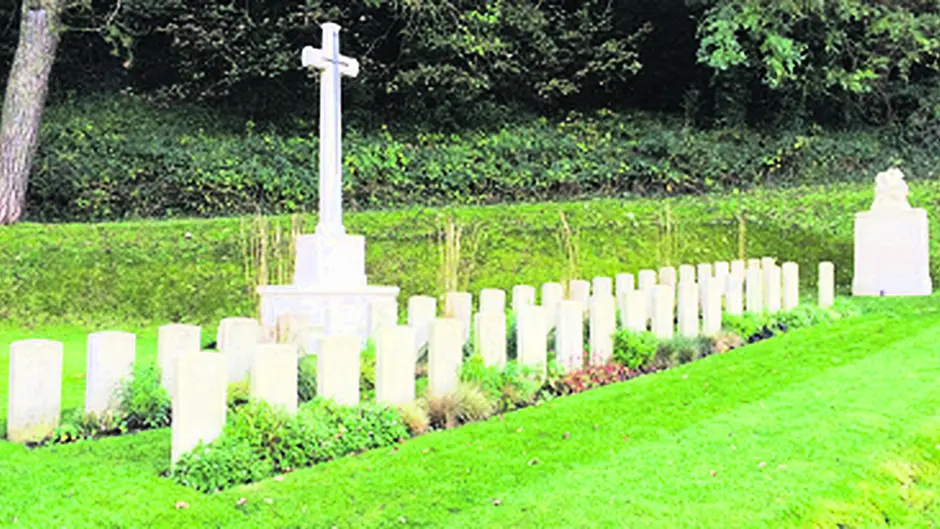West Cork native Michael Hallinan lost his life while bravely attempting to retrieve the body of his shot commander, on the Belgian coast, 100 years ago this month, writes Robert Hume
West Cork native Michael Hallinan lost his life while bravely attempting to retrieve the body of his shot commander, on the Belgian coast, 100 years ago this month, writes Robert Hume
ON April 23rd 1918, the Royal Navy attempted one of the most daring raids in history on the Belgian coast.
Its aim was to block the entrance to the Zeebrugge Canal – used by German submarines coming from their base at Bruges.
During the assault 176 British and Irish sailors were killed, and 412 wounded.
Among those who died was petty officer Michael Daniel Hallihan, aged 28.
He was born in 1889 to Margaret and Timothy, a fisherman from the village of Castletownshend, the coastal village south of Skibbereen.
Michael had followed in his grandfather’s footsteps in 1907, when he signed up with the Royal Navy for 12 years. He was promoted to leading seaman and petty officer, and served in the Battle of Jutland in 1916.
In February 1918 Michael was one of 50 men to volunteer for a secret and highly dangerous mission, from which they would be unlikely to come back alive. This turned out to be the Zeebrugge Raid, brainchild of rear-admiral Roger Keyes, launched early on the morning of April 23rd.
Historian Philip Warner describes the assault as ‘suicidal’ and ‘attempting the impossible’, not least because the entrance to the Zeebrugge Canal was half a mile from the harbour, and ships would be under intensive fire
all the way. Hallihan was assigned to HMS Iris, one of two converted Mersey ferryboats, which accompanied HMS Vindictive, an elderly British cruiser.
The Iris was charged with laying a smokescreen so that the cruiser could not be detected, while the raiding party scaled Zeebrugge’s long stone harbour wall, known as ‘the mole’, before descending 20ft to the ground, loaded with their rifles and grenades.
A superhuman task indeed. But it was St George’s Day, and that was thought to be a good omen.
The operation began badly. The smokescreen – devised by Wing Commander FA Brock, of Brock’s fireworks fame – proved useless when southerly winds blew the smoke away, making the Vindictive clearly visible, and vulnerable to German shellfire.
As Iris approached Zeebrugge, Lieutenant Commander George Bradford jumped on to the mole from a derrick in order to secure an anchor but was shot and killed. As he attempted to recover his commander’s body, Hallihan was also shot and killed.
The London Gazette described Michael’s gallantry and devotion to duty as ‘of the highest order’.
There were so many casualties that the sick bays were crammed and the surgeons overwhelmed. Nonetheless, the raid was represented at the time as a tremendous British victory by Allied propaganda. Rear-admiral Roger Keyes was knighted.
In reality, the Zeebrugge Raid only hindered operations by the Germans for a few days, and they were able to present it as a demonstration of their success in holding the port.
Commander George Bradford was one of 11 men who received a Victoria Cross. Michael Hallihan’s service records show that he, too, was considered for the award, but never received one.
Two of Michael’s brothers were also killed in active service.
Distant cousin Brian Limrick has discovered that Michael’s younger brother Timothy died in 1917, trapped in the engine room during a submarine accident in Gareloch, Scotland.
John James perished when a German submarine torpedoed his ship off the Irish coast in 1939. Only a third brother, Laurence, managed to return to West Cork after serving in the Royal Navy, and settled in Lickowen. A heavy toll paid to war by a single family.
This very week, 100 years ago in the Zeebrugge Raid, ‘many acts of heroism and self-sacrifice went unacknowledged,’ writes historian Paul Kendall. Among them the courageous actions of Castletownshend’s Michael Daniel Hallihan stand out.








